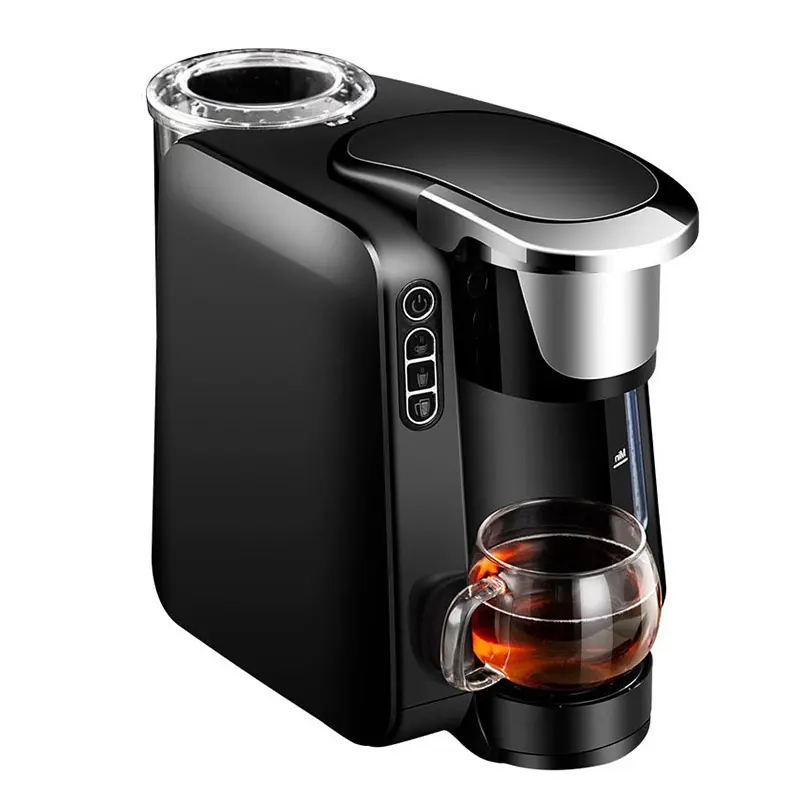Have you ever imagined that your morning cup of coffee can magically appear at the push of a button? The answer lies in the intricate design and functionality of coffee machines. In this blog post, we’ll delve into the fascinating world of coffee makers, exploring how they work and the various processes involved. So grab a fresh cup of coffee as we take you on a behind-the-scenes tour of your favorite drink.
1. Brewing basics:
Coffee machines are marvels of engineering designed to simplify the process of making the perfect cup of coffee. The core key components of a coffee machine include the water reservoir, heating element, brew basket and water bottle. Let’s see how they work together to create a delightful cup of coffee:
a) Water tank: The water tank holds the water needed to brew coffee. It is usually located on the back or side of the machine and can have different capacities.
b) Heating element: The heating element, usually made of metal, is responsible for heating the water to the optimum temperature for brewing. It can be a heating coil or a boiler, depending on the type of machine.
c) Brew Basket: The brew basket contains ground coffee and is placed over the carafe. It is a perforated container that allows water to pass through while retaining the coffee grounds.
d) Glass bottle: The glass bottle is where the brewed coffee is collected. It can be a glass container or a thermos to keep the coffee warm.
2. Brewing process:
Now that we understand the basic components, let’s dig into how a coffee machine actually brews coffee:
a) Water intake: The coffee machine starts the process by drawing water from the water tank using a pump or gravity. It then sends the water to the heating element where it is heated to the ideal brewing temperature.
b) Extraction: Once the water reaches the desired temperature, it is released onto the coffee grounds in the brew basket. In this process called extraction, the water extracts the flavors, oils and aromas from the coffee grounds.
c) Filtration: As the water passes through the brew basket, it filters out dissolved solids such as coffee oils and particles. This ensures a smooth and clean cup of coffee without any unwanted residue.
d) Drip Brewing: In most coffee makers, the brewed coffee flows down the brew basket and drips directly into the carafe. The speed of the water droplets can be adjusted to control the strength of the coffee.
e) Brewing complete: When the brewing process is complete, the heating element is switched off and the machine goes into standby mode or switches itself off automatically. This helps save energy when the machine is not in use.
3. Additional functions:
Coffee machines have come a long way from their basic functionality. Today, they are equipped with various additional features to enhance the brewing experience. Some popular features include:
a) Programmable Timers: These timers allow you to set a specific time for the machine to start brewing, ensuring you wake up with a fresh pot of coffee.
b) Strength Control: With this function, you can adjust the brewing time or the ratio of water to coffee to make a milder or stronger cup of coffee according to your preference.
c) Milk frother: Many coffee makers are now equipped with a built-in milk frother that produces the perfect milk froth for a delicious cappuccino or latte.
in conclusion:
Coffee makers aren’t just conveniences; they’re marvels of precision engineering, designed to deliver the perfect cup of coffee every time. From the water reservoir to the brewing process, every component plays a vital role in crafting your favorite morning elixir. So next time you drink freshly brewed coffee, take a moment to appreciate the intricate inner workings of your trusty coffee machine.
Post time: Jul-04-2023

